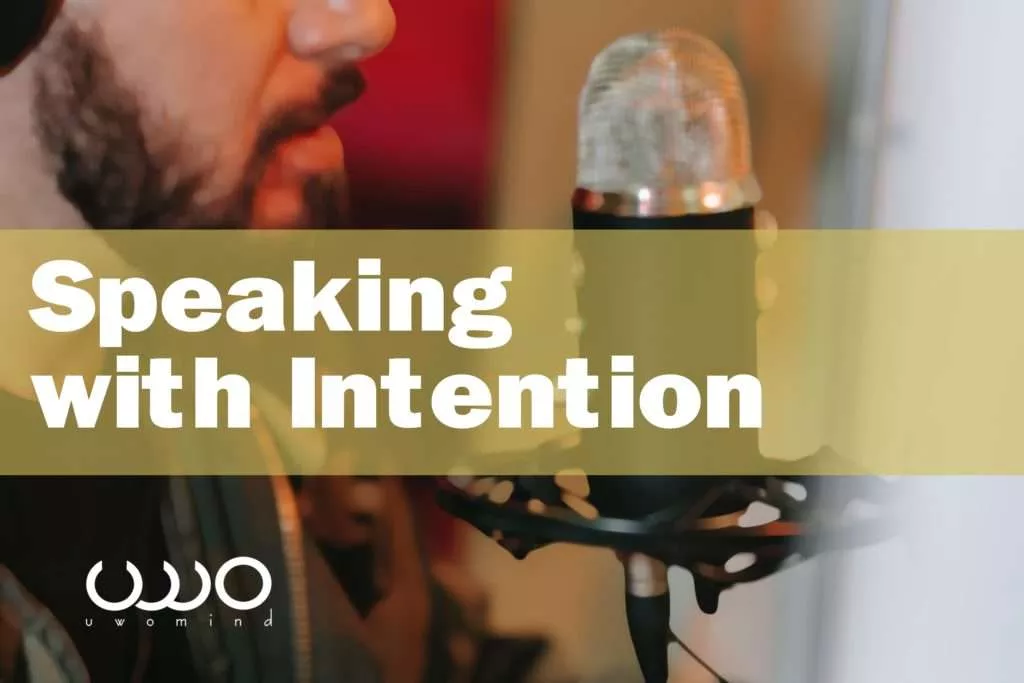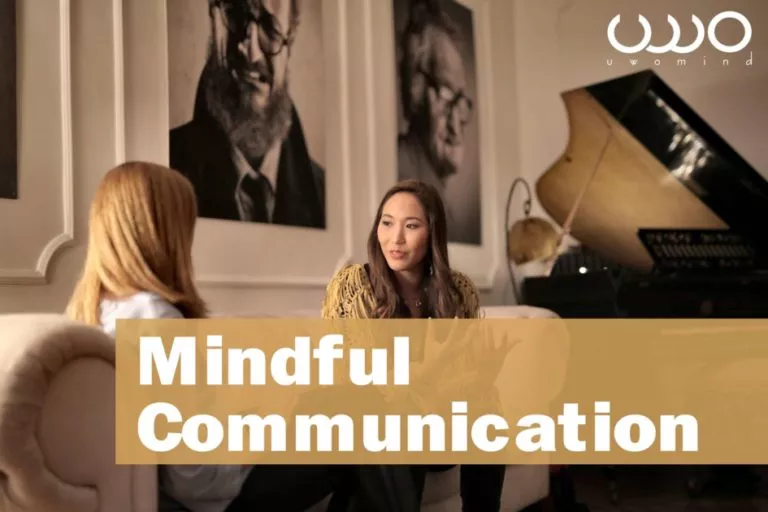Creating Deeper Connections Through Mindful Communication Practice : 11 steps
What is Mindful Communication
Effective communication in the workplace has long been recognized as a necessity. According to research, various positive outcomes, such as improved collaboration and more employee involvement, have been linked to this strategy. But many people still find it challenging to improve their communication abilities.
Communication is fundamentally about being receptive to the needs of others and doing so in a considerate manner. People may assume that you disagree with them, don’t value what they’re saying, or don’t value them and their time if you’re not there during a conversation. Unintentionally contributing to the communication breakdown can lead to misinterpretation, conflict among family members, or worsen a relationship’s already precarious state.
Precisely what does it mean to “communicate with mindfulness” mean?
When we communicate with people mindfully, we put mindfulness principles into practice. Intention, being fully present, remaining open and non-judgmental, and interacting with people with compassion are some of these principles. It’s about paying more attention to the two most important aspects of communication: listening and speaking. After that, we’ll delve deeper into each of these topics to show you how to approach them mindfully.
Listening with an open mind

The purpose of careful listening is to understand what the speaker is trying to impart, which may seem self-evident. It requires us to pay attention to what others say and give them our complete attention. According to the author, lecturer, and management expert, Stephen Covey, very few people can listen well.
To genuinely understand what people are saying, there are four frequent obstacles to mindful listening that might distract our attention from what is being said and take us out of the present moment.
More life quotes – Elevate-your-life-with-these-quotes-uwomind
These are:
- Evaluating yourself in light of other people’s ideas and experiences
- Attempting to read the speaker’s thoughts to foretell what they will say next
- What you’re going to say in advance
- Becoming presumptuous about what the speaker has to say before they finish
Avoiding self-centered listening, interrupting, finishing other people’s sentences, preparing a response while others talk, and making judgments can help you become a better listener. Instead, you might show that you paid attention to what the speaker had to say by paraphrasing and clarifying their words as appropriate.
Developing a sense of ease in the presence of quiet is a crucial component of mindful listening. Slowing down and letting others finish their sentences matter to many. In addition, it implies giving them time to gather their thoughts before diving in. When trying to learn something from a conversation, it’s crucial not to take the lead. If you give others the space and time they require, the dialogue that ensues is more likely to be fruitful and instructive.
The 11 steps of Mindful Communication
When we communicate with awareness, we slow down and react more thoughtfully. Doing so permits us to talk more compassionately, with less judgment and more self-control.
1. Clear Your Head, Get Your Feet on the Ground, and Have Patience.
Before initiating a conversation, try to clear your mind of any rushing thoughts. Set aside preconceived notions about the speaker. Knowing who or what someone is going to say puts you at a disadvantage since their words may be lost in translation during the listening process.
Having your feet on the ground and knowing where you are in relation to other people is essential. When you’re engaged in a conversation, this will keep you grounded and aware of your surroundings.
2. Listening attentively to someone else’s thoughts and feelings is essential in communication.
3. Make a Place for Your Talking.
You must be patient and persistent if you want to have a conversation with a stranger. When you pay close attention to what the other person is saying, you send a message that it is safe to be themselves around you.
Create an environment that encourages open dialogue. Even if you’re talking about something personal, you might want to find a quiet place to talk.
4. Consider Your Word Choices Third.
Don’t go right into a discussion if you’re asked a question. Spend a minimum of 10 to 20 seconds… preferably more… considering the question and your response.
5. Use “I” Statements
It’s best to employ “I” statements whenever possible when conversing with another person.
“You made me feel bad” is not an appropriate response to someone who offends you. Instead, say something like, “I’m sorry you hurt my feelings by saying that. “Using “I” words effectively means acknowledging and expressing your feelings and experiences without seeming judgmental or detached.
6. Continue to Look Other People in the Eyes.
Instead of focusing on your feet, the ceiling, or anything else in the room, turn your attention to the person you’re speaking with. Gaze into the speaker’s eyes and pay attention to what they say. Your kindness is evident in this gesture. What if someone else did the same for you?
7. Consider the other person’s viewpoint from their point of view.
People’s reactions to and interpretations of events are influenced by their worldviews. Take a step back and imagine yourself in the other person’s shoes.
8. Be Careful With Your Words!
What makes sense to you may not be so obvious or rational to someone else.
Consider a friend of mine who has an offbeat sense of humor. He appears to be making fun of you most of the time, but he isn’t. When people get angry or wounded because of his words, I doubt he even recognizes what he’s doing.
It only shows that words have the potential to inflict more harm than good, which is why you should exercise caution while employing them. Most individuals are wary of giving someone else another chance.
9. Make a point of doing and saying exactly what you mean.
Keep your promise if you promise to deliver a paper on a specified day when you chat with someone. If you keep your end of the bargain, others will see you as more trustworthy.
Always be honest about your intentions when apologizing in advance. Whether you’re doing business, dating, or just hanging out with pals, it’s critical to honor your commitments.
10. Never Assume Anything
Don’t rely on anything you’ve read or heard before. Don’t be afraid to gently ask for clarification if you don’t comprehend what the speaker is saying.
Individuals frequently misinterpret what others intend when they mean something very different. As long as you ask your inquiries with sincerity, there is nothing wrong with it.
11. Talk about what’s on your mind.
People are often portrayed in our minds in the context of a conversation. All of us are doing our best to look our best. To be loved and respected, we require the other person’s approval.
As a result, many people discuss pretending to be someone they’re not… As a result, they virtually always come out as dishonest.
One essential thing you can do for yourself is loyal to yourself. That necessitates honesty with yourself. As a result, you are under no obligation to be a jerk. You may be friendly and compassionate at the same time.
Why is mindful communication important? (The golden communication standards)
Poor communication is the source of all difficulties in both your business and personal lives. Having good communication skills isn’t a coincidence. Successful communicators can establish meaningful connections with others around them. As a result, success is inevitable both within and outside of the workplace.
Your life can benefit significantly from attentive communication, whether you’re trying to better your career or personal connections. This involves making a promise to yourself and the people around you to communicate positively.
- Listen with no interruption.
- Don’t bring your feelings into the discussion.
- Maintain an attitude of non-judgment and remember that there is no “wrong” or “right.”
- Let your audience know how important they are in your life by demonstrating that you comprehend their perspective or opinion.
By following these golden communication standards, you’ll become a person who can be relied upon to make unbiased decisions and mediate conflicts.
Benefits of Mindful Communication
|
Benefit |
Description |
| Improved understanding | You can gain a deeper understanding of the speaker’s ideas and feelings by being totally present and paying attention to what they are saying. |
| Enhanced relationships | You can create more solid, enduring relationships with others by speaking and listening to them with kindness and without interference. |
| Reduced conflict | You can minimize miscommunication and lower the possibility of disputes by communicating mindfully. |
| Increased self-awareness | You can improve your communication skills by engaging in mindful communication practices that help you become more attentive to your own thoughts, feelings, and behaviors. |
| Improved collaboration | You may encourage more effective collaboration and teamwork by being open and sensitive to other people’s ideas and viewpoints. |
Key Points for the Benefit of Mindful Communication
- Be mindful when listening and communicating.
- Communicate with kindness and without judgment.
- Totally focus on the present moment. (Related article – Turn Your all Moments into Mindful Moments – Best Way to Live Present)
- Keep your focus and maintain your balance.
- Be patient and allow others to finish their sentences.
- To demonstrate knowledge, explain and paraphrase
- In order to enhance collaboration and teamwork, encourage open and responsive communication.
How to Speaking with Intention

Mindful speaking is an essential part of good communication. You want to stay on topic while also keeping an eye on how your audience reacts. It is possible to clarify your message by observing others.
As a result, we are more prone to deviating from our key points when we ignore how we are speaking. Disclaimers, rationalizations, nasty comments, and repetitions are standard in mindless speech, which can detract from the message you are trying to convey.
Pay attention to what you’re saying to become a more aware speaker. Use examples to support your arguments and be as brief, straightforward, and specific as possible. As a result, it indicates that you consider people’s time and attention by focusing on what is most important to convey. Mindful communication necessitates being honest and trustworthy with oneself. This will encourage others to do the same and develop trust.


![[Vegan Lifestyle + Yoga] What is Pure Vegan & Vegan yoga? 4 What is pure VEGAN and Vegan yoga](https://www.uwomind.com/wp-content/uploads/2022/11/What-is-pure-VEGAN-and-Vegan-yoga.webp)

